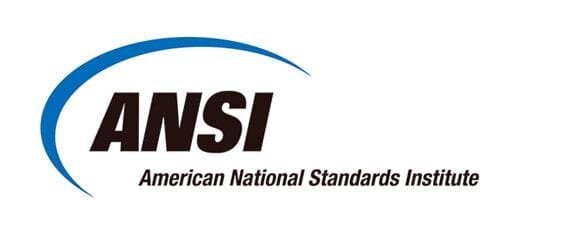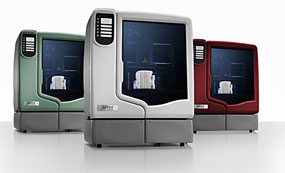
ANSI has released standards documents related to COVID-19 equipment
ANSI has publicly released a series of standards useful for production of COVID-19 equipment.
There are plenty of organizations across the world today working rapidly to develop all manner of medical equipment to address shortages during the crisis, and they face a big challenge: certification. In many cases, equipment and components being produced are rejected by medical authorities as the pieces are not certified or otherwise not suitable.
It’s hard to know what is truly required as most manufacturers are not necessarily in tune with medical equipment constraints. However, some of this knowledge is captured in a series of ANSI standards.
ANSI standards are highly useful, but are obtained from the organization by paying for them. This is how ANSI supports itself. During the crisis, however, ANSI has decided to freely release the standards related to COVID-19 parts and equipment production.
There are 38 documents in the archive, most of which do not relate to 3D printing. However, I suspect some of our readers are indeed working on projects building COVID-19 equipment and thus this information could be of considerable value. The documents include:
IEC 60601-1 Ed. 3.1 en:2012 Medical electrical equipment – Part 1: General requirements for basic safety and essential performance
IEC 60601-1-11 Ed. 2.0 b:2015 Medical electrical equipment – Part 1-11: General requirements for basic safety and essential performance – Collateral Standard: Requirements for medical electrical equipment and medical electrical systems used in the home healthcare environment
IEC 60601-1-2 Ed. 4.0 b:2014 Medical electrical equipment – Part 1-2: General requirements for basic safety and essential performance – Collateral Standard: Electromagnetic disturbances – Requirements and tests
IEC 60601-1-6 Amd.1 Ed. 3.0 b:2013 Amendment 1 – Medical electrical equipment – Part 1-6: General requirements for basic safety and essential performance – Collateral standard: Usability
IEC 60601-1-6 Ed. 3.0 b:2010 Medical electrical equipment – Part 1-6: General requirements for basic safety and essential performance – Collateral standard: Usability
IEC 60601-1-8 Amd.1 Ed. 2.0 b:2012 Amendment 1 – Medical electrical equipment – Part 1-8: General requirements for basic safety and essential performance – Collateral standard: General requirements, tests and guidance for alarm systems in medical electrical equipment and medical electrical systems
IEC 60601-1-8 Ed. 2.0 b:2006 Medical electrical equipment – Part 1-8: General requirements for basic safety and essential performance – Collateral Standard: General requirements, tests and guidance for alarm systems in medical electrical equipment and medical electrical systems
ISO 10651-3:1997 Lung ventilators for medical use — Part 3: Particular requirements for emergency and transport ventilators
ISO 10651-4:2002 Lung ventilators – Part 4: Particular requirements for operator-powered resuscitators
ISO 10651-5:2006 Lung ventilators for medical use – Particular requirements for basic safety and essential performance – Part 5: Gas-powered emergency resuscitators
ISO 10993-1:2018 Biological evaluation of medical devices – Part 1: Evaluation and testing within a risk management process
ISO 13485:2016 Medical devices – Quality management systems – Requirements for regulatory purposes
ISO 13688:2013 Protective clothing – General requirements
ISO 17510:2015 Medical devices – Sleep apnoea breathing therapy – Masks and application accessories
ISO 18082:2014 Anaesthetic and respiratory equipment – Dimensions of non-interchangeable screw-threaded (NIST) low-pressure connectors for medical gases
ISO 18082:2014/Amd1:2017 – Amendment 1
ISO 18562-1:2017 Biocompatibility evaluation of breathing gas pathways in healthcare applications – Part 1: Evaluation and testing within a risk management process
ISO 18562-2:2017 Biocompatibility evaluation of breathing gas pathways in healthcare applications – Part 2: Tests for emissions of particulate matter
ISO 18562-3:2017 Biocompatibility evaluation of breathing gas pathways in healthcare applications – Part 3: Tests for emissions of volatile organic compounds (VOCs)
ISO 18562-4:2017 Biocompatibility evaluation of breathing gas pathways in healthcare applications – Part 4: Tests for leachables in condensate
ISO 19223:2019 Lung ventilators and related equipment – Vocabulary and semantics
ISO 20395:2019 Biotechnology – Requirements for evaluating the performance of quantification methods for nucleic acid target sequences – qPCR and dPCR
ISO 22301:2019 Security and resilience – Business continuity management systems – Requirements
ISO 22316:2017 Security and resilience – Organizational resilience – Principles and attributes
ISO 22320:2018 Security and resilience – Emergency management – Guidelines for incident management
ISO 22395:2018 Security and resilience – Community resilience – Guidelines for supporting vulnerable persons in an emergency
ISO 31000:2018 Risk management – Guidelines
ISO 374-5:2016 Protective gloves against dangerous chemicals and micro-organisms – Part 5: Terminology and performance requirements for micro-organisms risks
ISO 5356-1:2015 Anaesthetic and respiratory equipment – Conical connectors – Part 1: Cones and sockets
ISO 80601-2-12:2020 Medical electrical equipment – Part 2-12: Particular requirements for basic safety and essential performance of critical care ventilators
ISO 80601-2-13:2011 Medical electrical equipment – Part 2-13: Particular requirements for basic safety and essential performance of an anaesthetic workstation
ISO 80601-2-13:2011/Amd1:2015 – Amendment 1
ISO 80601-2-13:2011/Amd2:2018 – Amendment 2
ISO 80601-2-70:2015 Medical Electrical Equipment – Part 2-70: Particular requirements for basic safety and essential performance of sleep apnoea breathing therapy
equipment
ISO 80601-2-74:2017 Medical electrical equipment – Part 2-74: Particular requirements for basic safety and essential performance of respiratory humidifying equipment
ISO 80601-2-79:2018 Medical electrical equipment – Part 2-79: Particular requirements for basic safety and essential performance of ventilatory support equipment for ventilatory impairment
ISO 80601-2-80:2018 Medical electrical equipment – Part 2-80: Particular requirements for basic safety and essential performance of ventilatory support equipment for ventilatory insufficiency
ISO/TS 16976-8:2013 Respiratory protective devices – Human factors – Part 8: Ergonomic factors
The process for gaining access to the documents is a little rough, however. You must first apply to the program via a form (link below) and register for this specific program. The program provides access only to the above documents.
You may download the documents after registration as required; you can pick and choose which documents are of interest.
However, you must use a very specific method to view the documents once downloaded. You must use Adobe Acrobat, and not any other PDF viewer. Your copy of Acrobat must include the FileOpen plugin, which I believe allows only you to access this particular instance of the document.
If you get all the plugins and applications installed correctly, you may — or may not — be able to view the documents. I installed all of these and in spite of that effort I was still unable to open any of the ANSI documents downloaded from the COVID-19 archive, with an error message saying the documents were not readable. Perhaps you will have better luck than I did.
Why go through this awkward process instead of just making the documents available? I think ANSI wants to protect their assets by preventing loss of the documents to public domain. They gain revenue by selling the documents, something that would happen even after the crisis ends.
My opinion is that if they are good citizens they should simply release the documents during the emergency and figure out any problems later. That’s what most supportive individuals and organizations have been doing; ANSI should, too.

